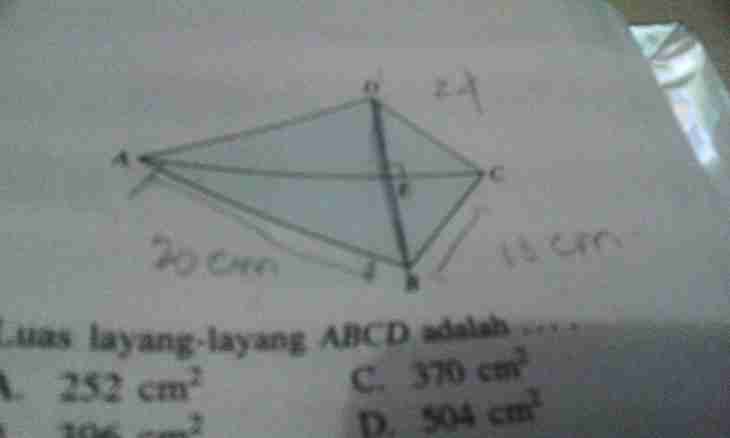Trapeze in which lengths of sides are equal and the bases are parallel, is called isosceles or ravnoboky. Both diagonals in such geometrical figure have the identical length which depending on the known parameters of a trapeze can be calculated in different ways.
Instruction
1. If lengths of the bases of an isosceles trapeze are known (A and B) and length of its side (C), for determination of lengths of diagonals (D) it is possible to use that the sum of squares of lengths of all parties is equal to the sum of squares of lengths of diagonals. This property follows from the fact that each of diagonals of a trapeze is a hypotenuse of a triangle in as which legs serve the side and the basis. And according to Pythagorean theorem the sum of squares of lengths of legs is equal to a hypotenuse length square. As sides are equal in an isosceles trapeze, as well as its diagonal, this property can be written down in such look: A² + B² + 2C² = 2D². From this formula follows that length of diagonal is equal to a square root from a half of the sum of squares of lengths of the bases put with a side length square: D = √ ((A² + B²)/2 + C²).
2. If lengths of the parties are not known, but there is length of the average line (L) and height (H) of an isosceles trapeze, then too it is simple to calculate length of diagonal (D). As length of the average line is equal to the half-sum of the bases of a trapeze, it gives the chance to find piece length between a point on the bigger basis in which height, and the top adjacent to this basis is lowered. In an isosceles trapeze length of this piece will coincide with length of the average line. As diagonal closes this piece and height of a trapeze in a rectangular triangle, it is possible to calculate its length. For example, on the same Pythagorean theorem it will be equal to a square root from the sum of squares of height and the average line: D= √ (L² + H²).
3. If lengths of both bases of an isosceles trapeze are known (A and B) and its height (H), as well as in the previous case, it is possible to calculate piece length between the point lowered on the greater side of height and adjoining to it top. The formula from the previous step is transformed to such look: D= √ ((A + B)²/4 + H²).

